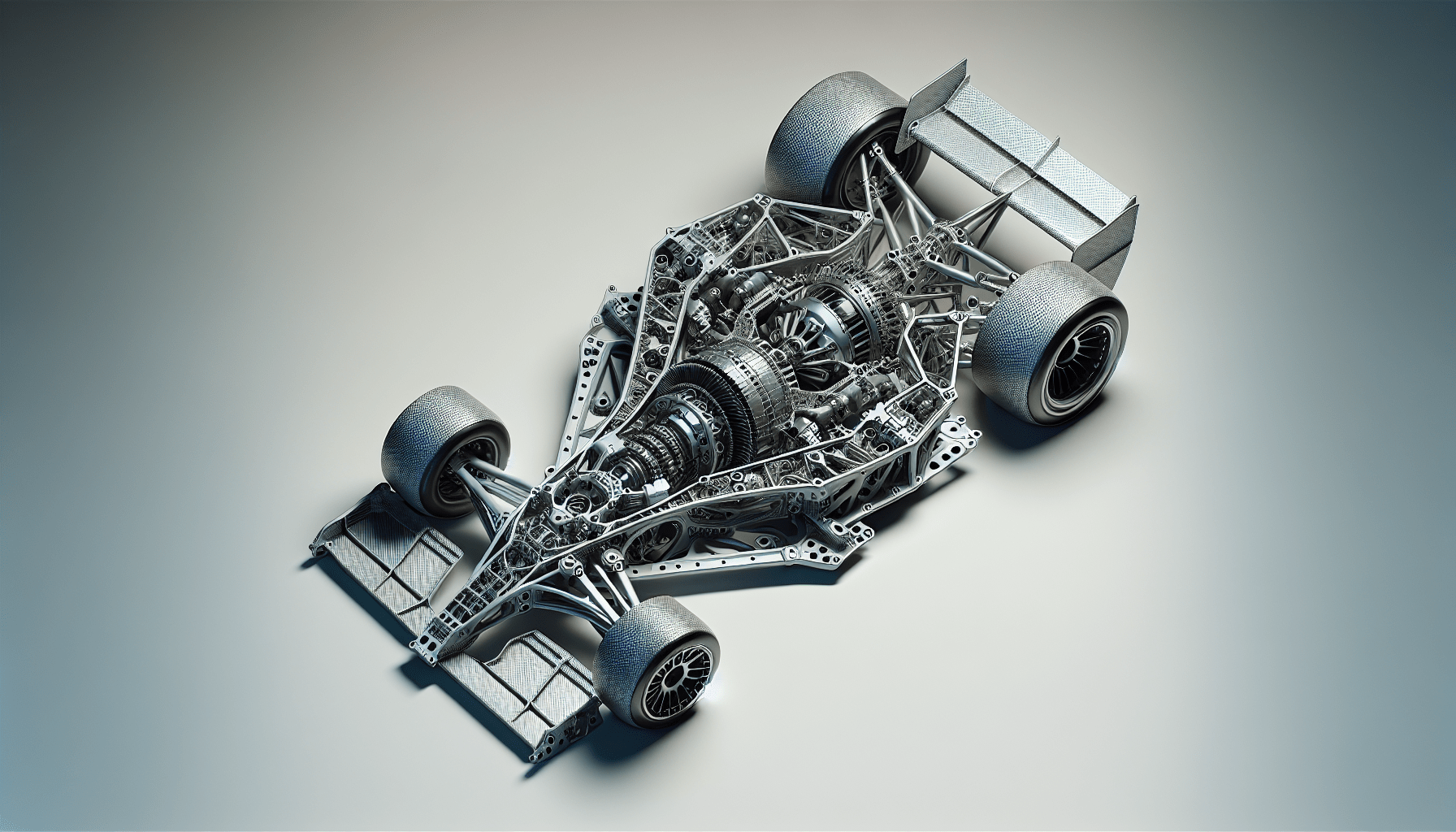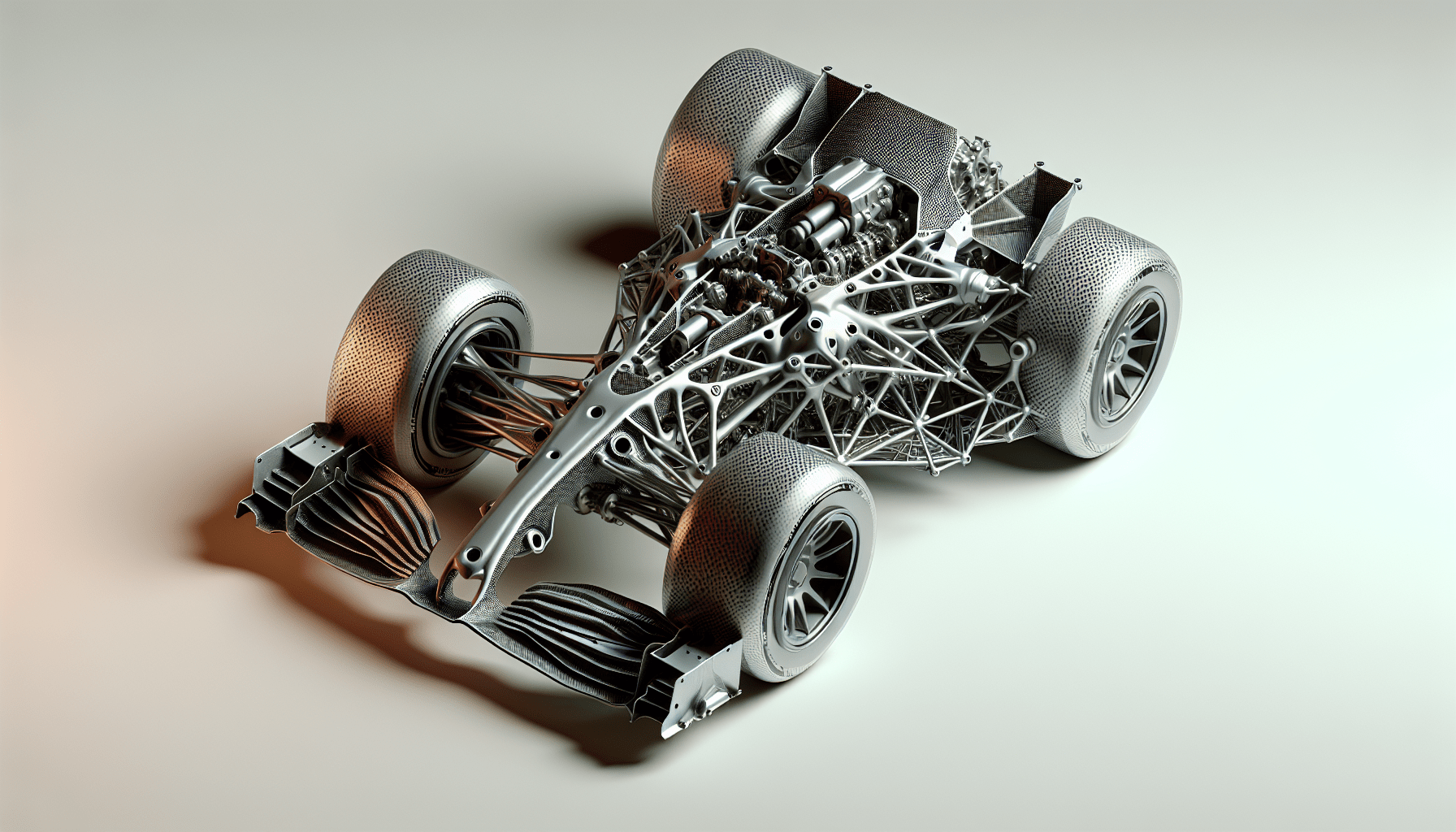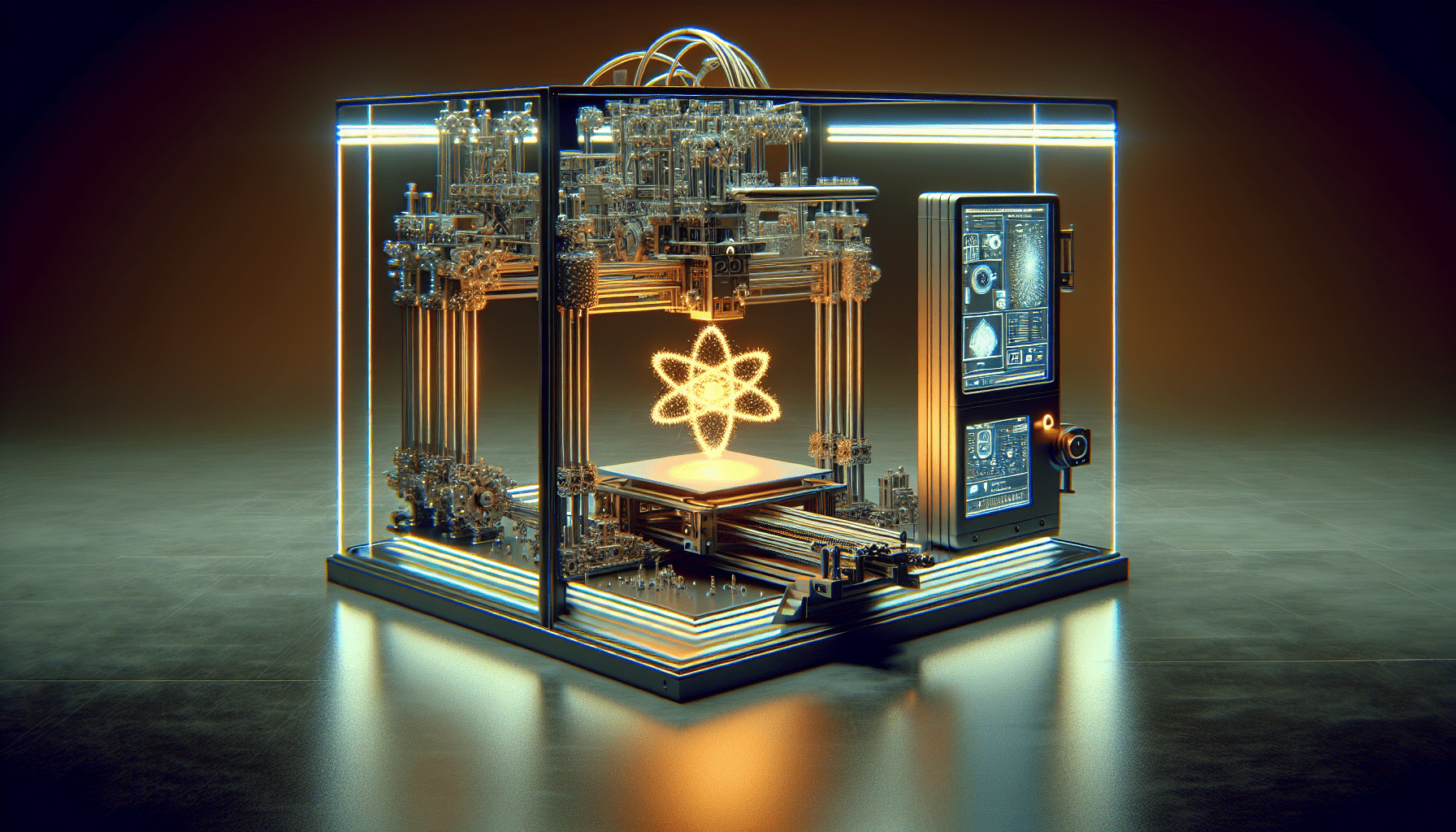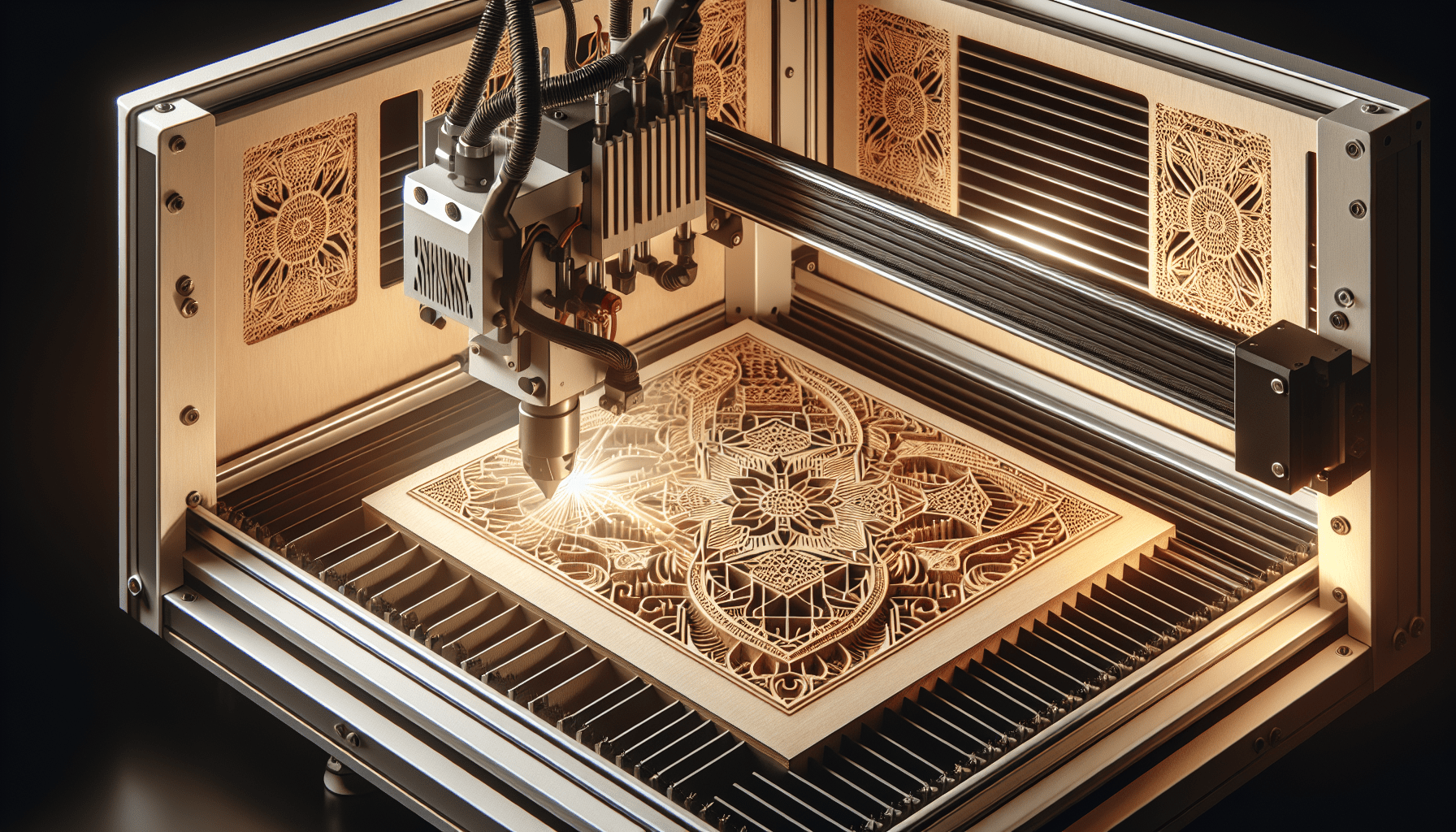ELEGOO Mars 5 Ultra 9K Resin 3D Printer, 150mm/h High Speed Printing, Smart Automatic Leveling, Intelligent Detection, WiFi-Transfer, Printing Size of 6.04 x 3.06 x 6.49 inch
$284.99 (as of June 19, 2025 23:45 GMT +00:00 - More infoProduct prices and availability are accurate as of the date/time indicated and are subject to change. Any price and availability information displayed on [relevant Amazon Site(s), as applicable] at the time of purchase will apply to the purchase of this product.)Have you ever wondered how the cutting-edge technology of additive manufacturing fits into the high-speed, high-stakes world of Formula 1 racing? As we race toward 2026, significant updates in the Formula 1 Technical Regulations are introducing new dimensions to this narrative. These regulations specifically outline the materials, components, and the precise areas where additive manufacturing (AM) can be utilized, all while ensuring that safety, performance, and innovation stay at the forefront.

$30 off $400+ Anycubic Products with code AC30OFF
Understanding Additive Manufacturing in F1
Additive manufacturing, commonly known as 3D printing, has already revolutionized numerous industries. But when it comes to Formula 1, it provides a unique edge. By allowing teams to create complex geometries that cannot be achieved with traditional manufacturing techniques, AM helps in producing lighter, stronger, and more efficient parts—factors that are crucial in the high-octane world of F1 racing.
Approved Materials for Additive Manufacturing
One of the most fascinating aspects of the new regulations is the list of approved materials. The regulations now emphasize a variety of metallic powders that are permitted for use. The details are compelling, so let’s break them down into some bite-sized pieces.
Aluminum Alloys
Aluminum alloys are favorites in F1 due to their lightweight and high-strength properties. The approved list includes both generic and proprietary products such as:
- AlSi10Mg
- AlSi7MG
- Al Cl−30AL
- P339 AM
- EOS Aluminium 2139 AM
- Aheadd CP1 b from Constellium
Additionally, reinforced Aluminum Alloys like A20X, 2024−RAM2, and 6061−RAM2 from Elementum3D are also allowed. Each of these alloys is tailored for specific performance enhancements, such as higher strength-to-weight ratios essential for critical F1 components.
Titanium Alloys
Titanium alloys are integral to F1, especially in high-stress components due to their excellent strength and corrosion resistance. Various grades of titanium, including Ti6Al4V and Ti 5553, are recorded on the approved list.
Steel Alloys
Steel remains crucial for certain F1 parts requiring exceptional durability. Commonly used stainless steels like 316 and 304 are permitted alongside other high-strength steel grades.
| Material Type | Specific Alloys |
|---|---|
| Aluminum Alloys | AlSi10Mg, AlSi7MG, Al Cl−30AL, P339 AM, EOS Aluminium 2139 AM, Aheadd CP1 b, A20X, 2024−RAM2, 6061−RAM2 |
| Titanium Alloys | Ti6Al4V, Ti 5553 |
| Steel Alloys | 316, 304 |
Superalloys
F1 parts that need to operate under extreme conditions utilize superalloys like Inconel 625 and 718, as well as Cobalt-Chrome. These materials can withstand high temperatures and are crucial for parts exposed to significant thermal stress.
Application of AM in Specific Parts
The new regulations go beyond just materials; they also specify the components where additive manufacturing can be applied. It’s an exciting leap forward for both the technology and the sport.
Suspension Uprights
One of the groundbreaking changes is the allowance for suspension uprights to be additively manufactured using titanium or aluminum alloys. Suspension uprights play a critical role in vehicle handling and stability, and this flexibility offers teams a new avenue to optimize design and performance.
Exhaust Assemblies
Additive manufacturing can now be used in specific areas within the exhaust assemblies. For instance, components like the stub/flange element at the cylinder head connection, the 3-into-1 element joining the primaries to the secondary, and the connection between the secondary and the turbocharger (TC) can be 3D printed. These areas allow for precision engineering, a must in the competitive world of Formula 1.
Heat Exchangers
While AM offers numerous advantages, the regulations impose certain limitations to ensure fairness and safety. For example, for primary heat exchangers, the core and header tanks must be made from aluminum alloy. Furthermore, the core itself cannot be created using AM technology, ensuring that these components maintain their structural integrity and reliability.
Benefits and Limitations
The use of additive manufacturing in F1 comes with its set of advantages and challenges. Let’s take a closer look at both.
Benefits
Design Flexibility
One of the most significant benefits of additive manufacturing is the freedom it offers in design. Engineers are not restricted by traditional manufacturing constraints, enabling the creation of complex geometries and optimized structures that can greatly enhance the performance of a race car.
Weight Reduction
AM enables the production of parts that are considerably lighter yet equally strong. This weight reduction can translate into faster lap times, as lower weight improves speed and efficiency.
Prototyping Speed
Additive manufacturing speeds up the prototyping process. Teams can quickly iterate designs, test them, and make instant adjustments based on data and performance feedback.
Limitations
Production Speed
Despite the prototyping advantages, the actual production speed can be slower than conventional methods, especially for larger parts. This limitation means teams must carefully choose which components to manufacture using AM.
Cost Considerations
Producing parts through AM can be expensive, primarily due to the costs associated with advanced materials and specialized equipment. Teams need to balance these costs against the performance benefits gained.
Regulatory Constraints
The new regulations impose limitations to ensure safety and fairness. Teams cannot use AM for every component, and there are strict guidelines on material choices and structural integrity.
Regulatory Impact on Fair Competition
F1 regulations aim to maintain a level playing field while fostering innovation. The 2026 updates reflect this balance by offering new avenues for technological advancement without compromising the sport’s competitive nature.

Buy Photon Mono M5 Get Free 1KG Resin
Future Trajectory of Additive Manufacturing in F1
As the 2026 regulations take effect, they signal a broader trend toward integrating new technologies in Formula 1. The journey of additive manufacturing in F1 has just begun, and its potential is enormous.
Technological Evolution
With each passing season, the boundary-pushing nature of F1 is expected to drive further advancements in additive manufacturing technologies. Innovations such as multi-material 3D printing, real-time data integration, and adaptive printing methods could soon become commonplace within the paddock.
Material Development
The quest for even lighter, stronger, and more heat-resistant materials will continue. Ongoing research in material sciences promises new alloys and composites that could make F1 cars faster and safer.
Enhanced Collaboration
The collaboration between F1 teams, additive manufacturing experts, and material scientists will only intensify. This synergy will lead to the development of bespoke solutions tailored specifically to the unique demands of F1 racing.
Conclusion
The 2026 Formula 1 Technical Regulations highlight the exciting intersection between advanced manufacturing technologies and high-performance motorsport engineering. By allowing specific applications of additive manufacturing, F1 teams have new tools at their disposal to push the envelope of design, performance, and innovation.
While these updates introduce a wealth of new possibilities, they also come with their set of challenges. Balancing the benefits of AM with the stringent demands and constraints of F1 racing will be a complex yet rewarding endeavor. As we look to the future, it’s clear that both additive manufacturing and Formula 1 will continue to drive each other forward, ushering in an era of unprecedented technological advancement. So, next time you see an F1 car zoom past, remember that it’s not just speed and skill at play—cutting-edge technology is very much a part of the action.
$30 off $400+ Anycubic Products with code AC30OFF








